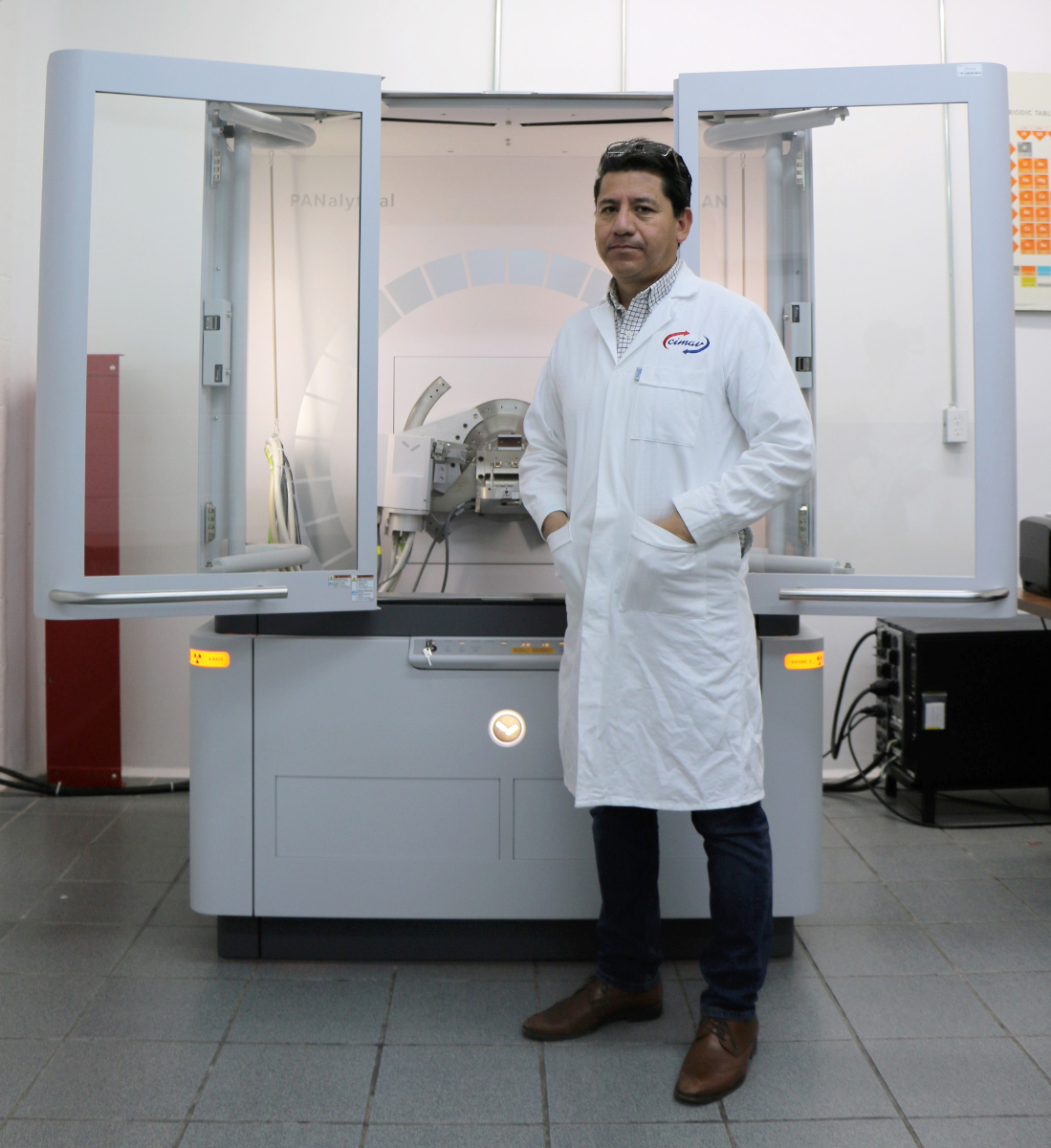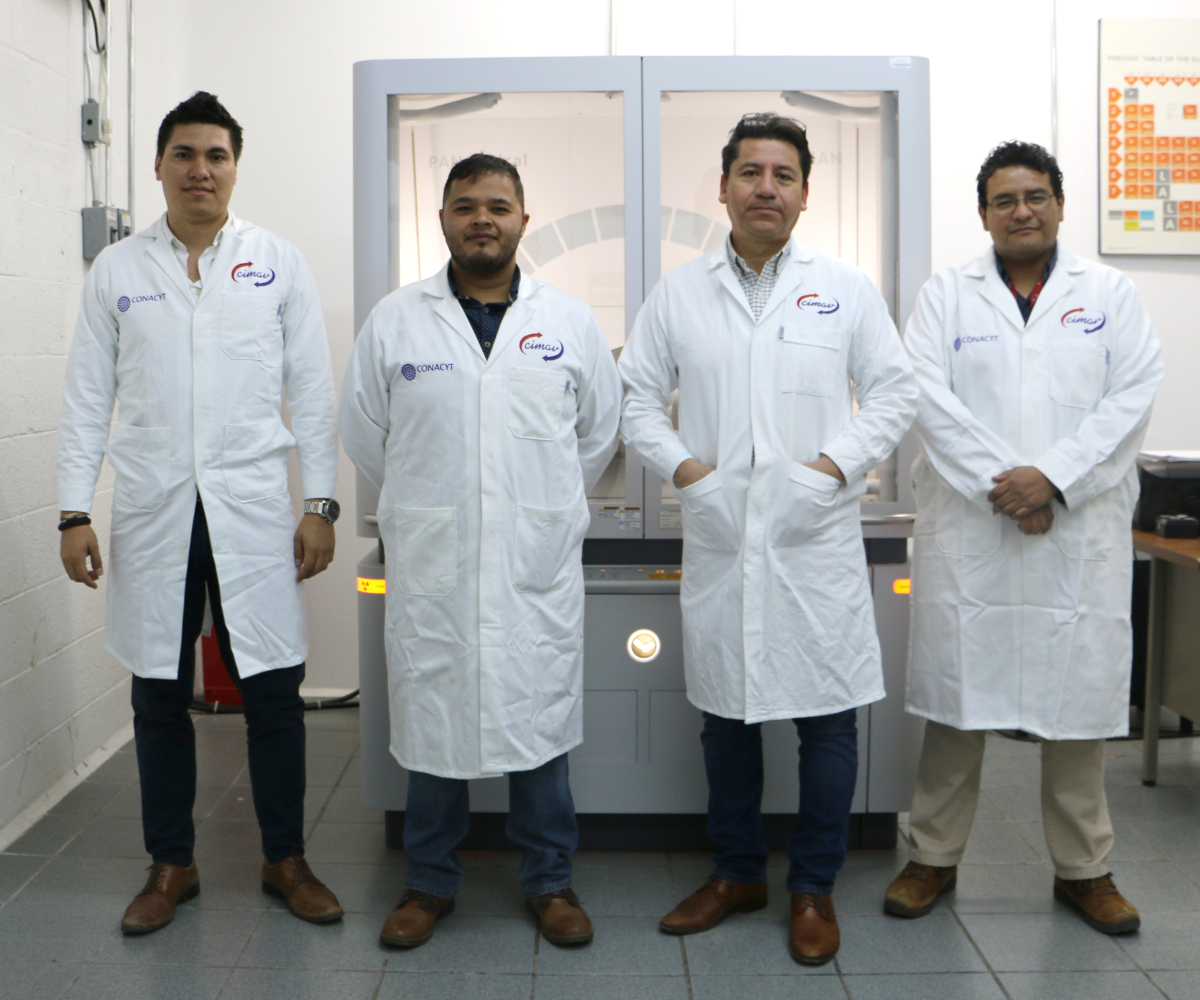Advanced Ceramics
At the Advanced Materials Research Center (Cimav), this team of researchers develops ferroelectric and ferromagnetic thin films to be used in electronic devices.
The dominant technology used in nowadays electronic devices is the called magnetic memory technology. These memories whose technology is quite efficient, present certain limitations. On the other hand, the ferroelectric memories offer a great advantage over the magnetic ones, due to the low energy require to operate, the faster speed of operation, the double storage capacity and also the lack of moving parts present no harm to the device.
Currently, there is a great interest in the development of microelectronic devices that could allow the ferroelectric and ferromagnetic coupling, with the purpose of expanding the data storage of non-volatile memories. Worldwide, great efforts are undergoing to develop materials that provide this coupling but within a single crystal structure, therefore, researcher teams lead their works through the development of this technology. One this teams at CIMAV in the advanced ceramics division is currently focusing its research to the development of thin films with ferroelectric (FE) and ferromagnetic (FM) properties.
This type of thin films, are obtained starting from bismuth ferrite based materials doped with different cations. Bismuth ferrite is a material, which exhibits ferroelectric and antiferroelectric properties, however, when doped with transition and alkaline earth elements (e.g., nickel, barium, cobalt), changes its antiferromagnetic property, becoming a ferromagnetic material. Additionally, by doping with other elements the ferroelectric properties are also improved. In this way both properties (FE and FM) are enhanced from the starting based bismuth ferrite. Researchers at CIMAV have been able to obtain both properties in a single crystal structure, resulting this in a reduction of production cost and providing a technological advantage for the electronic industry. On this matter, the researchers of this team have carried out research on new bismuth ferrite ceramic materials in heterostructure form (Ultra-thin bilayer films) doped with praseodymium and barium to be able to increase the ferroelectric and ferromagnetic coupling.
Also, these specialists developed a device to be able to measure the ferroelectric properties on these heterostructures having 50 micrometer diameter electrodes. This device costs only 10% of a commercial measuring device. This device is functional, fast, portable, practical and unique.

Electrical energy generation based on biomass material from agricultural waste
In this field, the team is working on ways to develop novel materials for their potential application on solid oxide fuel cells (SOFCs).
The SOFC’s cells can generate electrical energy based on biomass from agricultural, industrial and urban wastes. The process starts with the decomposition of methane gas, contaminant that the organic waste emits, which at the moment that it enters to the cell, it produces electrical energy. The development of this technology opens in México the access to a wider electrical market focus, which includes electrical energy generation in rural zones.
Due to the climate conditions in the north side of the country, where the temperature reaches its lower during the winter season, these systems could be employed as a dual system to produce both energy and power. During the winter the system would work as a heating system and as an electrical energy generator, while, during the summer it would be an electrical generator.
The SOFC’s cells do not contaminate, due to the chemical reaction inside of it, produces only vapor water and electricity. Also, these cells were not intended to be used in mobile systems; however, an automobile company has been able to develop a vehicle working on this kind of cells. This technology is employed with outstanding results and in a wide range of applications in Japan, Germany, Canada and the United States. For domestic used, the system has the size of a small refrigerator, working as a power plant using natural gas, methane, alcohol, hydrogen and carbon monoxide as fuel.
A solid oxide fuel cell is composed of a cathode, anode and electrolyte. The process a SOFC carries out is an oxide/reduction chemical reaction at 1000 °C, which uses a ceramic electrolyte instead of a liquid or polymeric membrane. In the cathode the oxygen gets reduced, in such a way that the ions move through the electrolyte towards the anode, where the hydrogen reaction occurs, generating a loss of electrons towards the external circuit, which can be used, for example, to move an automobile or charge any system.
Solid oxide fuel cells, double the efficiency of the conventional systems to produce electricity based on the Carnot cycle.
This researchers team at CIMAV are working on developing novel materials that will allow reducing the working temperature and the cost of this technology. Besides, these specialists are on the intermediate step of developing a device that through a system, will measure the efficiency of the fuel cell. In this matter they have built a prototype to test the cells up to 1000 °C employing different fuels. The work done at CIMAV has produced high-impact factor publications and the formation of specialize human resources.

- Research and Development of functional ceramics: ferroelectrics, ferromagnetics, materials for alternative energy and solid oxide fuel cells.
- Multiferroic materials and epitaxial growth of materials
- Determination of residual stress profile for ferrous and non-ferrous materials for the aerospace and automotive industry
- Project development for the cement, ceramic and mining industry
- Research on advanced ceramic technology for biomedical and industrial applications
- Teaching courses of material science, crystallography, diffraction, electron microscopy, advanced and traditional ceramic, and characterization of materials.